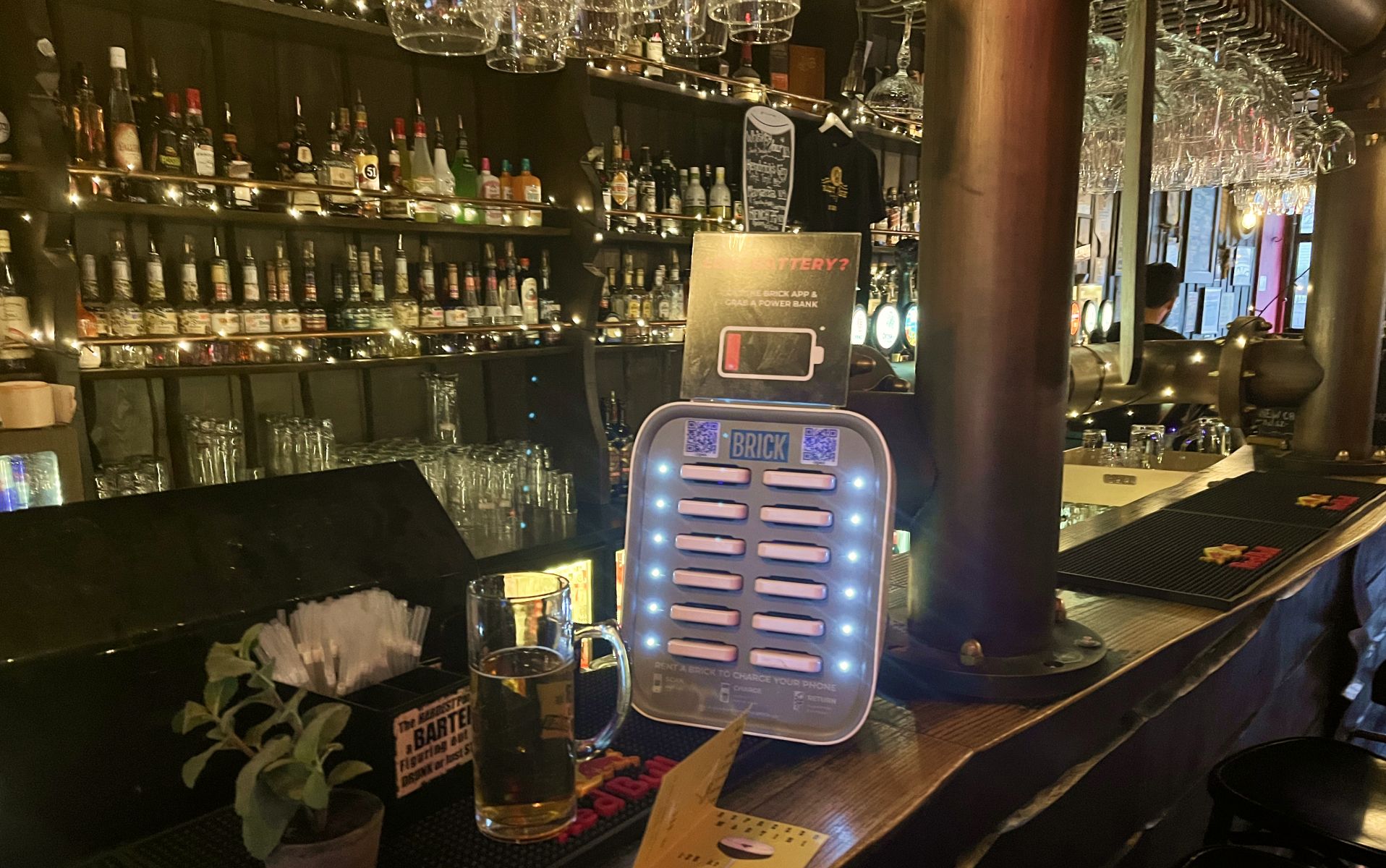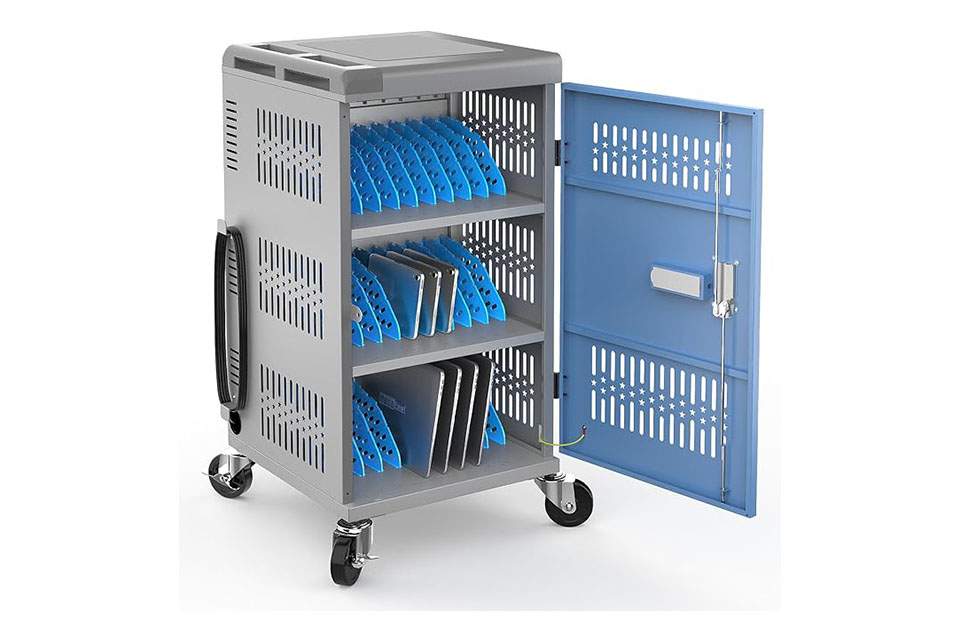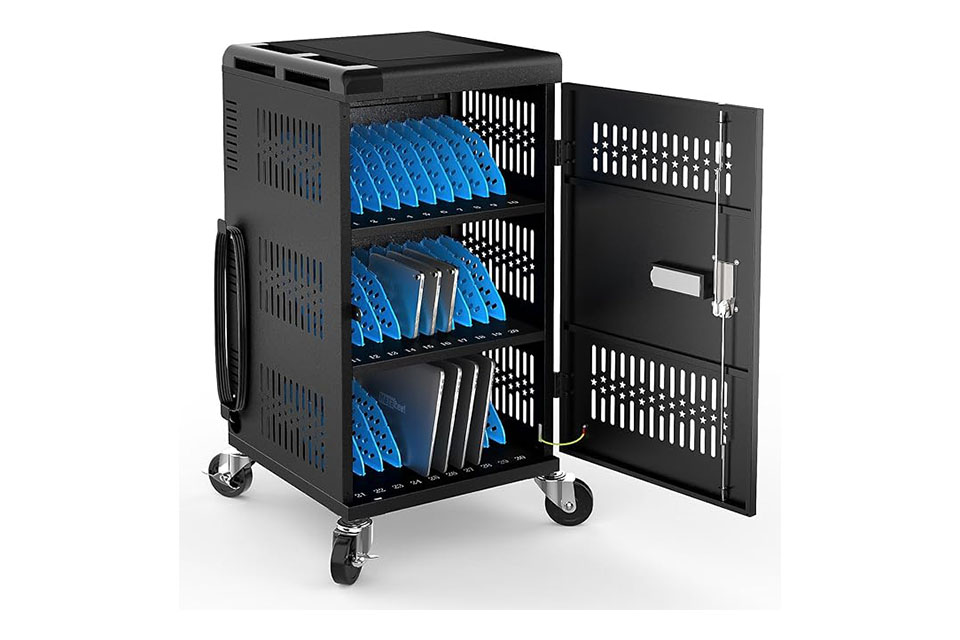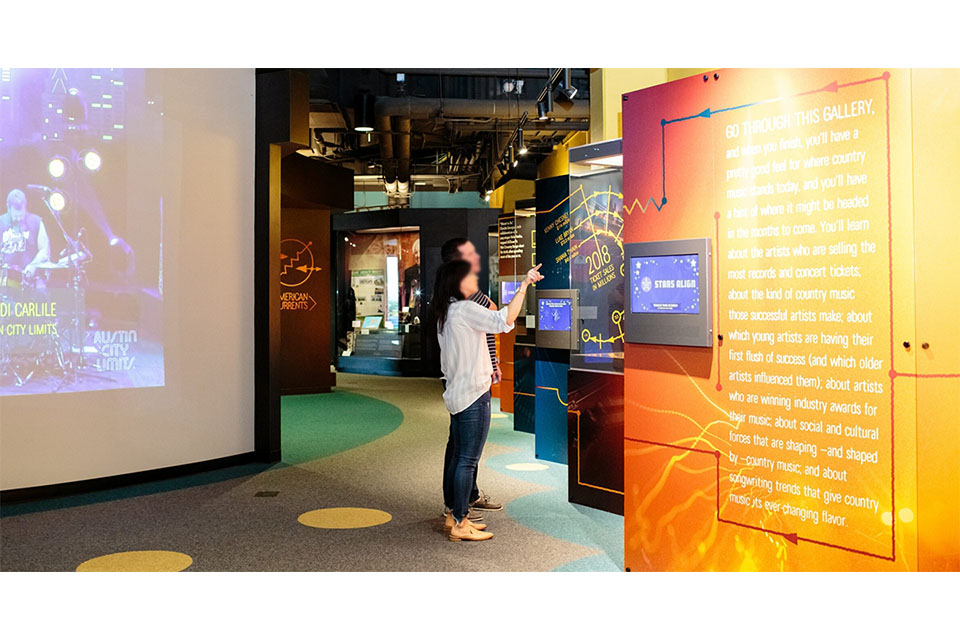How Charging Cabinets Extend Customer Stay Time in Cafes and Bars
Summary
Charging cabinets have emerged as a vital component in enhancing customer experience in cafes and bars by providing convenient solutions for mobile device charging. These cabinets address the common issue of "battery anxiety," allowing patrons to remain connected and engaged without the worry of their devices running out of power. This innovation not only enhances customer satisfaction but also encourages longer visits, ultimately leading to increased sales and repeat business for establishments that integrate these charging solutions.
Research indicates that charging cabinets can boost customer dwell time by as much as 50%, as guests are more inclined to extend their stay when they can charge their devices while enjoying food and beverages. This prolonged engagement translates into higher average transaction values, benefiting the bottom line of cafes and bars. Additionally, establishments that prioritize customer convenience through the provision of charging solutions enhance their reputation as modern and customer-centric venues, fostering loyalty among patrons.
While the benefits of charging cabinets are significant, there are notable challenges and controversies surrounding their implementation. Safety concerns, particularly for women using public charging stations, have raised issues regarding user vulnerability in less secure environments. Furthermore, the maintenance and reliability of these charging solutions are critical for ensuring consistent service, as malfunctions can deter customers and diminish the intended benefits. As cafes and bars navigate these challenges, the integration of charging cabinets remains a promising strategy to meet evolving consumer expectations in the hospitality sector.
Benefits of Charging Cabinets
Charging cabinets provide a multitude of advantages that can significantly enhance customer experience and operational efficiency in cafes and bars. These benefits include improved customer satisfaction, increased dwell time, and the potential for higher sales.
Enhanced Customer Satisfaction
One of the primary benefits of charging cabinets is their ability to alleviate "battery anxiety," a common concern among customers who rely heavily on their smartphones and devices. Studies indicate that a significant number of individuals experience stress when their device battery levels drop below 20%. By offering a convenient charging solution, cafes and bars can create a more comfortable environment, enhancing customer satisfaction and loyalty. Providing a reliable place to charge devices allows patrons to stay connected without the worry of their phone dying, making their visit more enjoyable.
Increased Dwell Time
Charging cabinets can significantly increase the amount of time customers spend in an establishment. Research shows that charging stations can enhance customer dwell time by as much as 50%. When patrons are able to charge their devices while enjoying their meals or drinks, they are more likely to extend their stay. This prolonged engagement can lead to increased consumption and additional purchases, ultimately benefiting the bottom line of cafes and bars.
Potential for Increased Revenue
The correlation between dwell time and sales potential is critical for cafes and bars. As customers spend more time on the premises due to the availability of charging cabinets, they are more likely to make unplanned purchases, thereby increasing the average transaction value. Additionally, establishments that provide charging solutions position themselves as customer-friendly environments, which can attract more visitors and encourage repeat business.
Cost Efficiency and Productivity
For businesses, charging cabinets can lead to cost savings by reducing device downtime and maintenance needs. Many cabinets feature smart charging technology that optimizes energy use and prevents overcharging, thereby extending the lifespan of devices. This efficiency not only reduces replacement costs but also ensures that staff members and customers can always access their devices when needed, minimizing disruptions in service.
Environmental Benefits
By integrating smart charging features, charging cabinets promote sustainability by reducing overall energy consumption. They ensure that devices are not overcharged, which helps to lower the carbon footprint of the establishment. This environmentally friendly approach can enhance the brand image of cafes and bars, attracting eco-conscious consumers.
Types of Charging Cabinets
Charging cabinets come in various designs and functionalities, catering to different environments and usage needs. Understanding the types of charging cabinets available can help businesses and institutions choose the most suitable solution for their specific requirements.
Standard Charging Cabinets
Standard charging cabinets are designed for general use in educational institutions, corporate environments, and healthcare facilities. These cabinets typically feature multiple charging ports, shelves for device storage, and lockable doors for security. They allow for the simultaneous charging of various devices such as laptops, tablets, and smartphones, centralizing the charging process and reducing downtime. Schools often utilize these cabinets to ensure that devices are charged and ready for use at the beginning of each day.
Portable Charging Cabinets
Portable charging cabinets offer flexibility and mobility, making them ideal for environments where devices need to be charged in multiple locations. These cabinets often come with wheels and lightweight designs, allowing them to be easily moved between different rooms or settings. Their compact nature also ensures they can fit in tight spaces, making them a valuable asset in bustling environments like cafes and bars.
Wireless Charging Cabinets
As technology evolves, so do charging solutions. Wireless charging cabinets enable users to charge their devices without the need for physical connectors. Utilizing inductive charging technology, these cabinets allow patrons to place compatible devices on designated surfaces for effortless charging. This innovation is particularly beneficial in cafes and bars, as it enhances the customer experience by providing a modern and convenient charging solution.
Smart Charging Cabinets
Smart charging cabinets integrate advanced technology to optimize charging efficiency. Equipped with smart charging capabilities, these cabinets can detect the type of device being charged and adjust the power output accordingly, preventing overcharging and extending battery life. Some smart cabinets also feature management software that allows for remote monitoring and control, making them suitable for larger enterprises and public spaces where device management is crucial.
Specialty Charging Cabinets
Certain charging cabinets are designed for specific industries or use cases. For instance, charging cabinets used in healthcare settings are built to accommodate medical devices and ensure they remain charged and hygienic. These specialty cabinets often incorporate additional safety features, such as UV sanitization capabilities, to protect both devices and users. Retail environments may opt for cabinets that also serve as point-of-sale (POS) systems, helping streamline operations while ensuring devices are always charged and ready for use.
By understanding the various types of charging cabinets, businesses can make informed decisions that enhance operational efficiency and customer satisfaction. Whether in a school, hospital, cafe, or corporate office, investing in the right charging cabinet can lead to improved productivity and a better overall experience for users.
Implementation in Cafes and Bars
Design and Placement of Charging Stations
Incorporating charging stations into cafes and bars is a strategic move that enhances customer experience and extends stay time. The design and placement of these stations are crucial for maximizing their utility and effectiveness. Ideally, charging stations should be strategically located in high-traffic areas, such as near entrances, communal seating, or waiting areas, to encourage usage and ensure visibility. This accessibility reinforces the establishment's commitment to customer convenience and satisfaction.
Charging solutions can vary based on the venue's specific needs. Fixed stations are typically more suitable for places where customers are likely to stay for extended periods, such as cafes and lounges. In contrast, portable solutions may be more beneficial in dynamic environments, like event spaces, where flexibility is paramount.
Enhancing Customer Engagement
The implementation of charging stations can significantly influence customer engagement strategies. By meeting the practical need for device charging, cafes and bars can transform a simple visit into a more extended experience. Customers who can charge their devices while dining or waiting are likely to feel more comfortable and inclined to stay longer, thus increasing their overall engagement with the venue.
In addition, the presence of charging stations can encourage customers to explore the menu and offerings while they wait for their devices to charge, thereby enhancing the potential for increased sales. Establishments that prioritize this convenience not only improve customer retention but also foster a sense of loyalty and satisfaction, leading to repeat visits.
Integration with Interior Design
Beyond functionality, the aesthetic integration of charging stations into the overall interior design of cafes and bars is vital. Designers can choose charging solutions that complement the establishment's decor and atmosphere. For instance, using sleek, modern charging kiosks or strategically placed modular furniture with integrated charging capabilities can enhance both the visual appeal and the customer experience.
Furthermore, ensuring that these stations are equipped with multiple charging connectors compatible with a variety of devices is essential. This inclusivity demonstrates an understanding of diverse customer needs and reinforces the establishment's reputation as a customer-centric environment. By creating an atmosphere that balances aesthetic appeal with functional utility, cafes and bars can effectively engage customers on both emotional and practical levels, thereby maximizing the impact of charging stations in their spaces.
Case Studies
Charging Stations in Hospitality Settings
Charging stations have become increasingly prevalent in cafes and bars, serving not only as a convenience but also as a strategic tool for enhancing customer experience and retention. A case study of PJs Tavern illustrates how customer preferences and demographic factors influence the implementation of charging solutions. The venue's integration of charging stations has been informed by an understanding of the modern consumer's need to stay connected while enjoying their time out, thereby directly affecting their dining and social experiences.
Women's Experiences with Charging Stations
Research focusing on women's experiences reveals significant safety concerns associated with public charging stations. Participants described feeling vulnerable during the charging process, particularly when they had to exit their vehicles and interact with payment systems. One participant expressed, "We are sitting ducks. Women are placed into an unacceptable vulnerable position," highlighting the need for more secure and user-friendly charging environments. This underscores the necessity of designing charging stations with safety and accessibility in mind, especially for women who may feel at risk in such scenarios.
Feedback Mechanisms
Customer feedback is essential for improving charging experiences in hospitality environments. Businesses have begun implementing strategies to collect insights during the charging process. For instance, strategically placed prompts near charging stations invite customers to share their opinions via surveys, helping businesses tailor their offerings. This not only enhances customer satisfaction but also fosters a sense of involvement, as patrons see their feedback translated into tangible improvements.
Interactive Features
Integrating interactive features at charging stations can further enhance the customer experience. The use of touch screens and digital surveys transforms the wait time into an engaging opportunity for interaction, allowing customers to receive digital receipts, participate in loyalty programs, or access exclusive promotions. This integration not only adds value but also encourages customers to remain longer at the venue, increasing the likelihood of additional purchases.
Through these case studies, it is evident that the strategic placement and design of charging stations can significantly impact customer retention and satisfaction in cafes and bars, highlighting the importance of understanding user experiences and incorporating their feedback into service design.
Market Trends
The integration of charging cabinets in cafes and bars is becoming increasingly popular as businesses recognize the dual benefits of enhancing customer experience and boosting revenue. This trend is driven by changing consumer behaviors and the growing reliance on mobile devices, which necessitate convenient charging solutions while patrons enjoy their time at these establishments.
Economic Impact on Businesses
The presence of charging stations has been shown to significantly increase customer dwell time, leading to greater sales opportunities. Studies indicate that businesses equipped with charging solutions attract more customers and enhance their overall spending. Specifically, cafes and restaurants that offer phone charging capabilities report an increase in average ticket size, as customers are more likely to order additional items while they wait for their devices to charge. Additionally, the introduction of charging solutions can positively impact customer loyalty, as patrons tend to favor establishments that meet their needs for convenience and accessibility.
Evolving Customer Expectations
As more consumers travel with electric devices, they increasingly expect cafes and bars to provide charging options. This expectation is becoming a critical component of the customer experience in the hospitality sector. Establishments that effectively incorporate these charging solutions not only fulfill a basic need but also demonstrate their commitment to customer satisfaction. This proactive approach has been linked to improved brand perception and increased likelihood of positive reviews and recommendations from satisfied customers.
The Role of Technology in Enhancing Experiences
Emerging technologies are shaping how charging solutions are integrated into the customer experience. For instance, sophisticated EV charging software can streamline the management of charging stations, ensuring that they meet customer demands efficiently. Such technologies enable businesses to focus more on customer engagement while automating the logistics of charging services. This seamless integration can significantly enhance the overall ambiance of cafes and bars, creating a more inviting and enjoyable atmosphere for patrons.
Challenges and Considerations
Infrastructure Limitations
The implementation of charging cabinets also faces infrastructure limitations. As the market for electric vehicle charging expands, the existing charging infrastructure may not always meet the growing demands for accessibility and convenience. For instance, while companies like IONITY have made significant strides in establishing high-power charging networks across Europe, the focus is shifting towards enhancing user experience, indicating a need for continued investment in more convenient and accessible charging solutions. Businesses must consider how their charging stations integrate with existing facilities and how they can be optimized to prevent overcrowding and ensure a smooth user experience.
Maintenance and Reliability
Regular maintenance is essential to ensure the optimal operation of charging cabinets. Businesses must implement routine inspections and maintenance protocols to avoid downtime caused by malfunctioning equipment. This includes checks on cable integrity, port functionality, and the overall cleanliness of the charging station. Additionally, integrating advanced diagnostic tools can help identify potential issues before they impact user experience, enhancing the reliability of these services.
Technological Adaptability
The rapid evolution of technology poses another challenge. Charging solutions must remain adaptable to accommodate emerging devices and standards, such as wireless charging capabilities. Businesses should plan for regular upgrades to their charging solutions to keep pace with technological advancements and meet the evolving needs of customers. This adaptability not only enhances user satisfaction but also positions businesses as forward-thinking and customer-focused.
Financial Considerations
Finally, the financial implications of installing and maintaining charging cabinets must be carefully considered. While these stations can provide significant returns on investment through increased customer dwell time and potential pay-per-use models, the initial upfront costs can vary widely based on technology and scale. Businesses must weigh these costs against potential revenue streams and consider strategies for maximizing profitability while ensuring a high-quality user experience.
Future Outlook
Charging Experience Enhancement
Cafes and bars are recognizing the potential of charging cabinets to enhance the overall customer experience. By integrating mobile device charging solutions, businesses can transform their venues into multifunctional spaces that cater to the needs of customers who rely heavily on their devices for communication and entertainment. This shift from a "grab and go" mentality to a "stay and play" experience reflects a broader trend where customers are looking for venues that provide comfort and convenience, potentially increasing dwell time and customer loyalty.
Consumer Demand and Market Potential
As the demand for mobile charging solutions rises, businesses that adopt these technologies early stand to gain a competitive advantage. Current consumer surveys indicate a strong desire for more public charging options, underscoring the necessity for timely infrastructure development that meets evolving customer expectations. The anticipated market dynamics suggest that charging stations will not only serve as utility hubs but also evolve into experiential touchpoints that enhance customer engagement, ultimately driving sales and fostering brand loyalty.
 Mobile Charging Cabinets: Power on the Go for Exhibitions and Concerts
Mobile Charging Cabinets: Power on the Go for Exhibitions and Concerts
 How Charging Cabinets Improve Attendee Experience at Conferences
How Charging Cabinets Improve Attendee Experience at Conferences
 Declutter Your Office: The Role of Charging Cabinets in Modern Workspaces
Declutter Your Office: The Role of Charging Cabinets in Modern Workspaces

